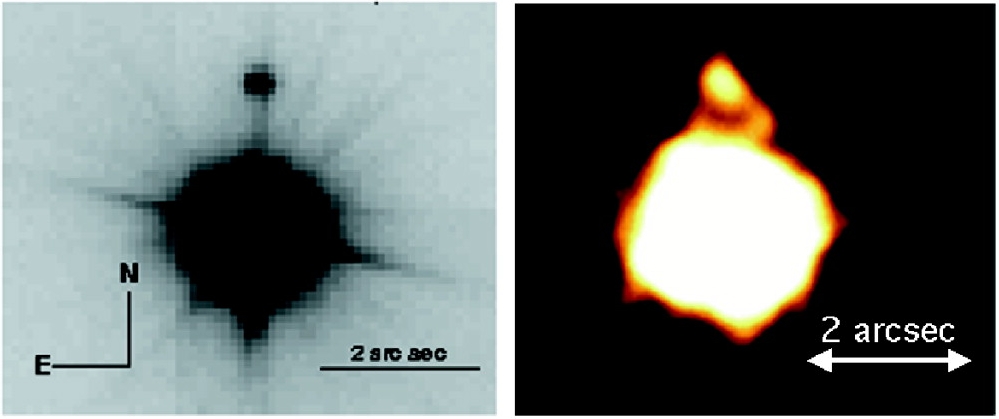
 Credit: Tsuboi et al.,
The Astrophysical Journal, March, 2003
Credit: Tsuboi et al.,
The Astrophysical Journal, March, 2003
Middle-Aged, Failed Star Still Active
A star shines by burning hydrogen to helium, but in order to do this the star must have a mass in excess of about 80 times the mass of the planet Jupiter (or about 1% of the mass of our Sun). Objects which are less massive than this limit are called "Brown Dwarfs". These failed stars are astrophysically important since they are the missing link between planets and stars provide a significant source of so-called "dark matter". Brown Dwarfs are difficult to study since they are so small and so faint. X-ray emission from these stars tells astronomers about conditions in the stellar atmosphere and in the stellar interior, and new X-ray observatories are providing more information than ever before about these objects. The image above is a Chandra X-ray Observatory image obtained with the ACIS camera of a 12-million year old star called TWA 5 which possesses a brown dwarf companion. The image on the left is in infrared image showing the star as a bright object and the faint brown dwarf above it. The Chandra image is on the right. The X-ray emission is similar to that in our sun. By studying these objects in systems with well determined ages astronomers can infer how X-ray emission in brown dwarfs evolves with time.
Last Week *
HEA Dictionary * Archive
* Search HEAPOW
* Education
Each week the HEASARC
brings you new, exciting and beautiful images from X-ray and Gamma ray
astronomy. Check back each week and be sure to check out the HEAPOW archive!
Last modified March 17, 2003


